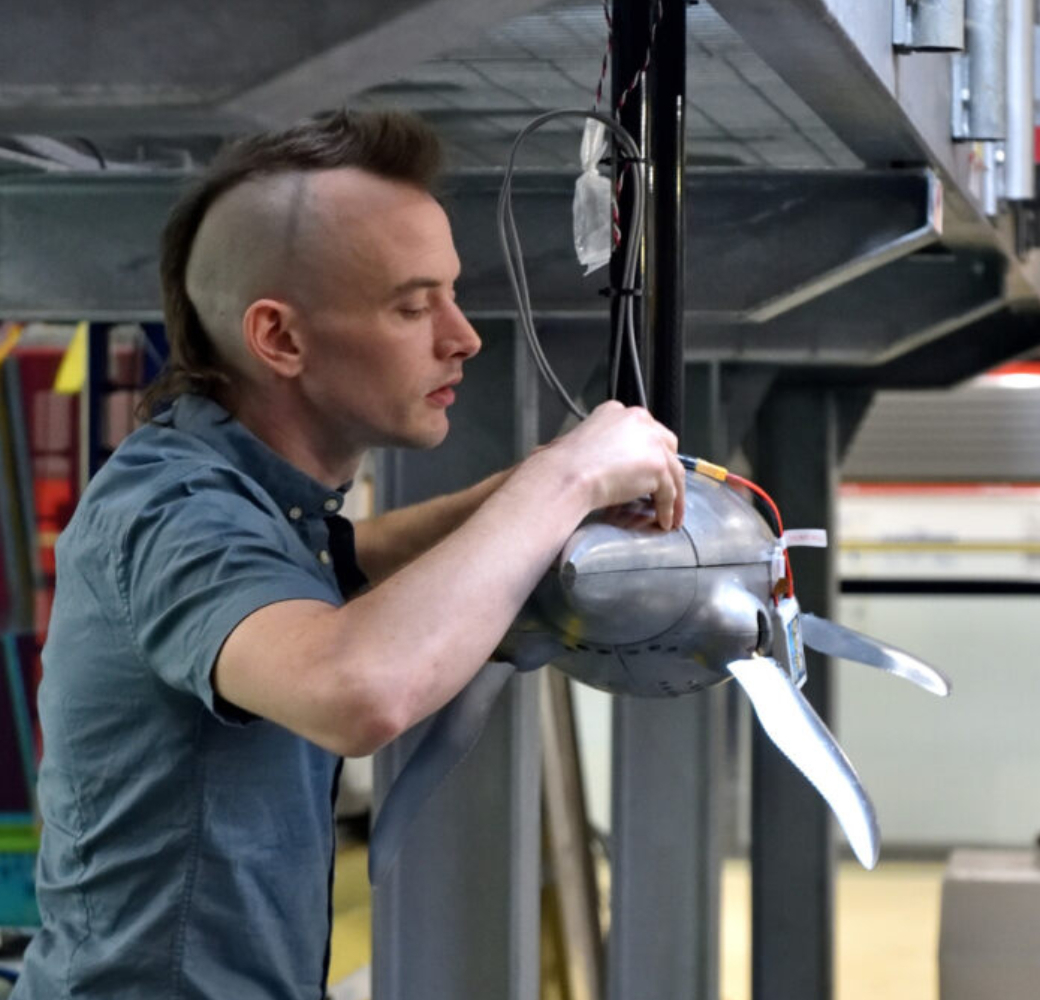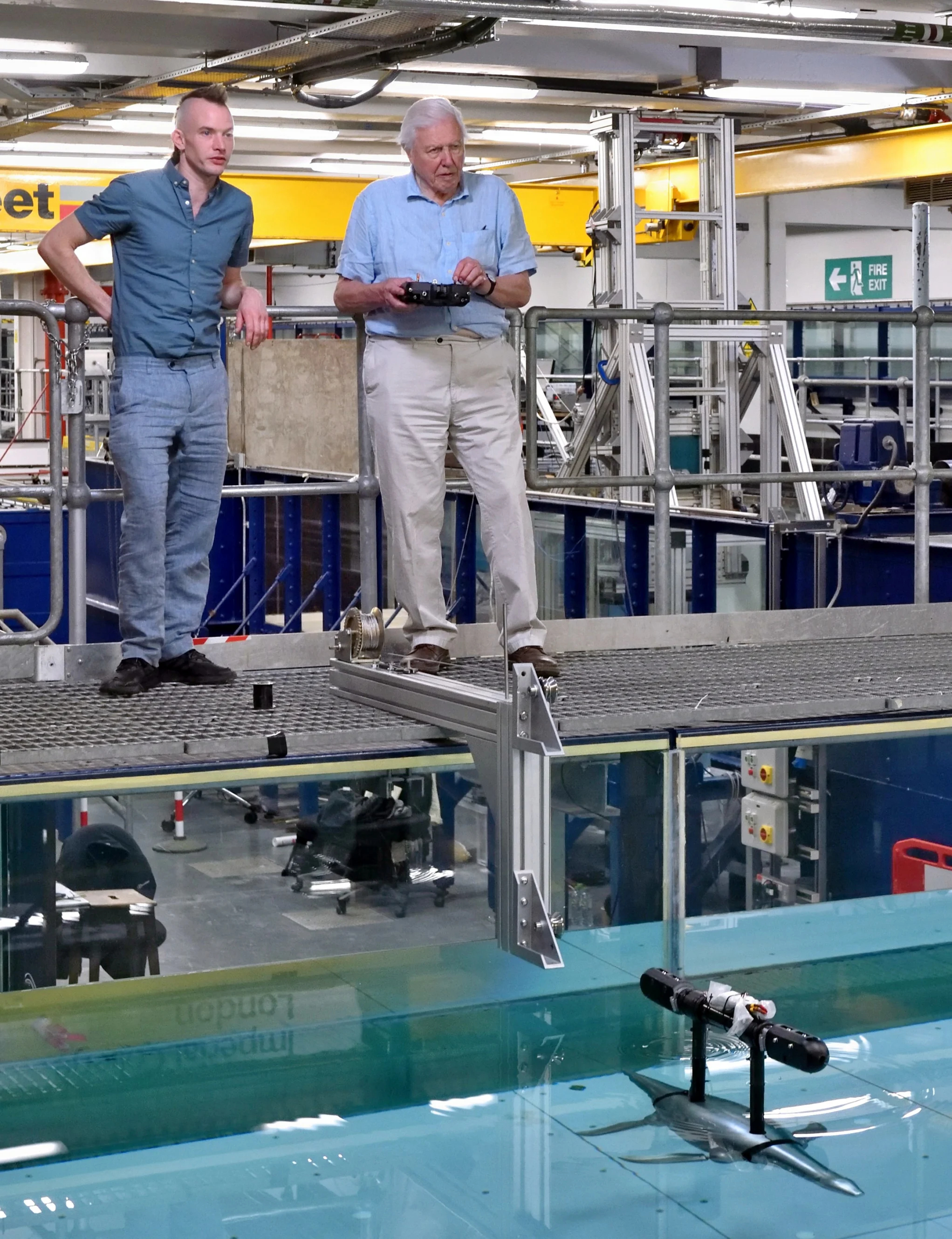Luke Edward
M U S C U T T
Luke Edward
M U S C U T T
So, how does an aerospace engineer end up building a robotic plesiosaur?
Well, I was interested in science from a young age. In fact, my favourite books were all about science, maths or engineeering. As I learnt more about science and engineering, I became increasingly amazed at the wonders of the natural world and particularly the incredibly efficient engineering solutions found in nature.
My desire to understand how things worked led to my undergraduate and Masters degrees in aerospace engineering from the University of Sheffield, which led me to a PhD in Biomechanics at Southampton University, looking at the Hydrodynamics of Plesiosaurs.
You might think planes and plesiosaurs have little in common but once you realise that wings and flippers can function in very similar ways and they both move through a fluid (air/water), it doesn't take long to see that they have some important characteristics in common.
My research began with a detailed analysis of plesiosaur fossils and involved a combination of aerospace engineering, robotics, and palaeontology to discover the secrets of these prehistoric beasts. As we were primarily interested in how the plesiosaur used its flippers, we built a flipper system mounted on a gantry, without a head or tail.

Photo credit:Jo Mieszkowski
Without teamwork and collaboration, very little science would ever get done. My thanks go to Bharathram Ganapathisubramani, Gareth Dyke, Gabriel Weymouth, Darren Naish and Colin Palmer for leadership and support during my PhD.

Photo credit:Jo Mieszkowski
The team's findings settled a long-standing debate about how plesiosaurs used their flippers. We found that plesiosaurs used a tandem flipper propulsion system, meaning the four flippers work together to push them through water. This system is unique because all other animals with flippers, like penguins and turtles, only use the front two for propulsion, and the rear flippers or feet for steering. This resulted in a number of peer-reviewed scientific papers. You can see more information on this in the RESEARCH section of this website.
The flipper system was a simplified prototype of the fully-formed swimming robot 'FLIP' - the world’s first scientifically-accurate plesiosaur robot - which recently appeared in the BBC programme 'Attenborough and the Giant Sea Monster'. In fact, Sir David Attenborough was at the controls for Flip's first swim.
After my doctorate, I began working at the Structural Dynamics group in Imperial’s Department of Mechanical
Engineering, supporting researchers working on aeroplane engines and the structural effects of vibration.
Keen to continue bringing plesiosaurs to life in my spare time, Project Flip really took off
when I met James Hogg, who had recently opened the Yorkshire Natural History Museum in Sheffield, and who agreed
to support the work.
Flip is currently helping me with further study of plesiosaur
locomotion in the hydrodynamics lab at Imperial College London.
Articles relating to the BBC programme Attenborough and the Giant Sea Monster.
The following institutions have all helped fund or have facilitated my research. Please note that inclusion of organisational logos on this site does not imply an ongoing relationship or any kind of approval or endorsement of my work by that organisation.